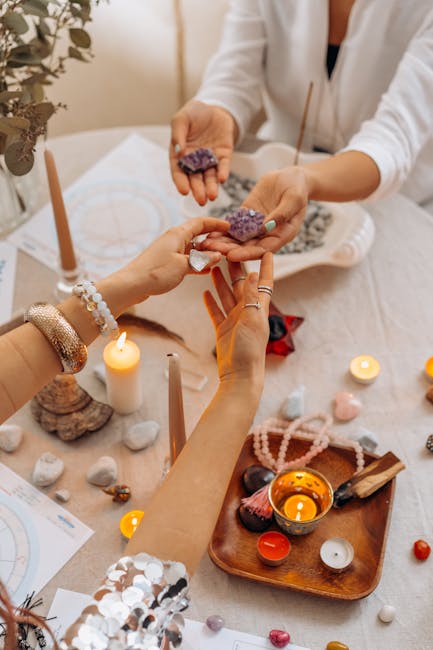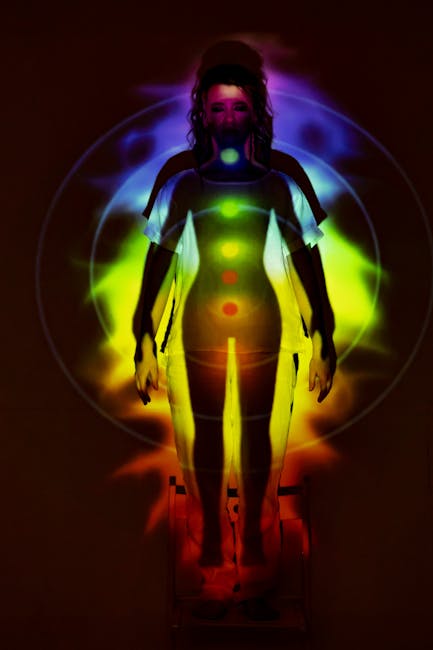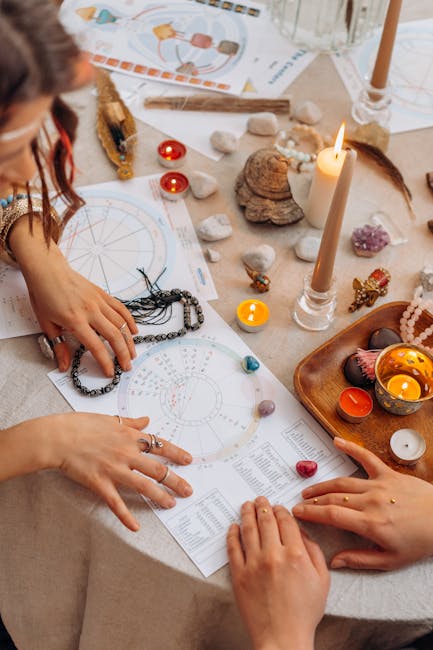Introduction to Reiki
Reiki, a form of energy healing, has been gaining recognition worldwide for its potential to promote holistic health and well-being. It is a practice that transcends the physical realm, reaching into the emotional, mental, and spiritual aspects of our existence. This introduction to Reiki will provide a comprehensive understanding of what it is, its origins, and how it works.
What is Reiki?
Reiki is a Japanese technique for stress reduction and relaxation that also promotes healing. The term is derived from two Japanese words: “Rei,” which means “God’s Wisdom or the Higher Power,” and “Ki,” which means “life force energy.” Thus, Reiki can be interpreted as “spiritually guided life force energy.” It is a non-invasive, gentle practice that seeks to restore balance and harmony within the body.
Reiki practitioners believe that everyone has the ability to connect with their own healing energy and use it to strengthen energy in themselves and others. It is not tied to any specific religion or religious practice, making it accessible to anyone regardless of their spiritual beliefs.
Reiki is not a cure for disease or illness, but it may assist the body in creating an environment to facilitate healing. It is used in conjunction with other medical or therapeutic techniques to relieve side effects and promote recovery.
Origins of Reiki
Reiki was developed in the early 20th century by Mikao Usui, a Japanese Buddhist. After a mystical experience on Mount Kurama, Usui claimed to have received the ability to heal without depleting his own energy. He then established a healing society and began teaching others his method, which he called Usui Reiki Ryoho.
Reiki was brought to the West in the mid-20th century by Hawayo Takata, a Hawaiian woman of Japanese descent. She learned Reiki in Japan and later established several clinics in Hawaii. Through her teaching, Reiki spread across the United States and eventually the world.
Today, there are many different styles and interpretations of Reiki, but the Usui System of Natural Healing is the most commonly practiced form. Despite variations in approach, the core belief in the power of life force energy remains consistent across all forms of Reiki.
How does Reiki work?
Reiki works on the principle that there is a “life force energy” that flows through us. This energy is what causes us to be alive. If one’s “life force energy” is low, then we are more likely to get sick or feel stress, and if it is high, we are more capable of being happy and healthy.
During a Reiki session, the practitioner places their hands lightly on or over specific areas of the head, limbs, and torso using different hand shapes. They may use a prescribed set of hand positions, relying on their intuition to guide them to the areas where energy is needed.
The flow of energy through a Reiki practitioner’s hands can be felt as a warm or tingling sensation. This energy encourages relaxation and helps to release tension, promoting a sense of well-being and balance.

Photo by Mikhail Nilov on Pexels
The Benefits of Reiki
Reiki is a holistic healing technique that offers a multitude of benefits. It can have a positive impact on your physical health, emotional and mental well-being, and spiritual growth. Let’s delve into the various benefits of Reiki.
Physical benefits
Reiki can help alleviate various physical ailments and conditions. It is often used as a complementary therapy in cancer treatment to help manage symptoms and side effects. Here are some of the physical benefits of Reiki:
- Improves sleep quality
- Reduces chronic pain
- Helps with fatigue and boosts energy levels
- Enhances the body’s self-healing mechanisms
- Supports the immune system
Reiki is not a replacement for traditional medicine, but it can be a beneficial addition to a comprehensive treatment plan. Always consult with your healthcare provider before starting any new treatment or therapy.
Emotional and mental benefits
Reiki can also have profound effects on emotional and mental health. It promotes a deep sense of relaxation, which can help reduce stress and anxiety. By helping to release emotional blockages, Reiki can also aid in improving mood and enhancing overall well-being.
Here are some of the emotional and mental benefits of Reiki:
- Reduces stress and anxiety
- Improves focus and clarity
- Helps alleviate depression
- Promotes emotional balance and harmony
- Enhances self-awareness and intuition
Reiki can be a powerful tool for emotional healing and mental health. It encourages a positive mindset and helps to create a peaceful state of mind.
Spiritual benefits
Reiki is deeply spiritual in nature. While it is not tied to any religion, it can enhance one’s sense of connection to their spirituality. Reiki can help individuals tap into their inner wisdom, enhance their intuition, and foster a deeper sense of purpose and meaning in life.
Here are some of the spiritual benefits of Reiki:
- Deepens spiritual connection and awareness
- Enhances intuition and inner wisdom
- Helps in personal growth and self-discovery
- Creates a sense of inner peace and harmony
- Supports the manifestation of personal and spiritual goals
Whether you are seeking physical healing, emotional balance, or spiritual growth, Reiki has something to offer. It is a versatile and accessible tool for anyone on a journey towards holistic health and well-being.

Photo by Mikhail Nilov on Pexels
The Reiki Healing Process
Understanding the Reiki healing process can help you get the most out of your sessions. This section will guide you through the setup of a Reiki session, the hand positions and energy flow, and what to expect during a session.
Reiki session setup
A Reiki session typically takes place in a quiet, peaceful setting. It can be done anywhere, as long as it’s a place where the recipient can relax and feel comfortable. The recipient remains fully clothed and lies on a massage table or sits on a chair.
The practitioner may use specific Reiki symbols to help connect to the energy and may also use crystals or other tools to aid in the healing process. The session usually begins with the practitioner performing a short meditation to center themselves and connect with the Reiki energy.
Each session is unique and tailored to the individual’s needs. The practitioner may use their intuition or guidance from the recipient to focus the energy where it’s most needed.
Hand positions and energy flow
The practitioner places their hands lightly on or over specific areas of the recipient’s body. These areas can include the head, neck, chest, stomach, and back. The practitioner uses a series of hand positions, spending several minutes in each position.
As the practitioner holds each position, healing energy flows from their hands into the recipient’s body. The practitioner doesn’t direct the healing; they simply act as a conduit for the energy. The energy goes where it’s needed and works to restore balance and remove blockages.
It’s important to note that the practitioner’s hands can become warm or tingly as the energy flows. This is a normal part of the process and is often a sign that the energy is working.
What to expect during a Reiki session
During a Reiki session, recipients often feel a deep sense of relaxation and peace. Some people report feeling a warm or tingling sensation where the practitioner’s hands are placed. Others may see colors or images, or have emotional responses. All these experiences are normal and are part of the healing process.
After the session, it’s important to take some time to rest and integrate the energy. Drinking plenty of water and eating light, healthy meals can help support the body’s healing process. It’s also beneficial to spend some time in quiet reflection or meditation.
Reiki is a gentle, non-invasive healing technique that can support overall health and well-being. Whether you’re seeking physical healing, emotional balance, or spiritual growth, Reiki can be a valuable tool on your wellness journey.

Photo by Mikhail Nilov on Pexels
Reiki and Self-Healing
Reiki is not only a healing technique that can be performed by practitioners, but it’s also a tool that individuals can use for self-healing and self-care. This section will guide you on how to use Reiki for self-care, techniques for self-healing with Reiki, and how to incorporate Reiki into your daily life.
Using Reiki for self-care
Reiki can be a powerful tool for self-care. By learning to tap into your own life force energy, you can use Reiki to promote relaxation, reduce stress, and support your body’s natural healing processes. Here are some ways you can use Reiki for self-care:
- Perform self-Reiki to balance your energy and promote relaxation
- Use Reiki to help manage stress and anxiety
- Use Reiki to support physical healing and wellness
- Use Reiki to promote emotional balance and well-being
- Use Reiki to deepen your spiritual practice and enhance your intuition
By incorporating Reiki into your self-care routine, you can support your overall health and well-being and foster a deeper connection with your own energy and intuition.
Techniques for self-healing with Reiki
Self-healing with Reiki involves using specific techniques to channel life force energy into your own body. Here are some techniques for self-healing with Reiki:
- Perform a self-Reiki session: This involves using specific hand positions to channel energy into different areas of your body.
- Use Reiki symbols: Reiki practitioners use specific symbols to help connect with the energy. These symbols can also be used in self-healing.
- Use Reiki meditation: This involves meditating while channeling Reiki energy to promote relaxation and healing.
- Use Reiki breathing exercises: Breathing exercises can help to enhance the flow of energy and promote relaxation and healing.
By practicing these techniques regularly, you can enhance your connection with your own energy, promote healing and balance, and support your overall health and well-being.
Incorporating Reiki into daily life
Reiki can be incorporated into your daily life in many ways. Here are some suggestions:
- Start your day with a self-Reiki session to balance your energy and set a positive tone for the day.
- Use Reiki to help manage stress throughout the day. Whenever you feel stressed or overwhelmed, take a few moments to channel Reiki energy and promote relaxation.
- End your day with a Reiki meditation to help release any stress or tension from the day and promote a good night’s sleep.
- Use Reiki when you’re feeling unwell to support your body’s natural healing processes.
By incorporating Reiki into your daily life, you can maintain a balanced and positive energy flow, support your health and well-being, and foster a deeper connection with your own energy and intuition.
Reiki and Complementary Therapies
Reiki is often used in conjunction with other therapies to enhance their effectiveness and promote holistic healing. This section will explore how Reiki can complement traditional medicine, other energy healing modalities, and mental health therapies.
Reiki and traditional medicine
Reiki is not a replacement for traditional medicine, but it can be a beneficial addition to a comprehensive treatment plan. Reiki can help manage symptoms and side effects, promote relaxation and stress reduction, and support the body’s natural healing processes. Here are some ways Reiki can complement traditional medicine:
- Used alongside cancer treatments to help manage symptoms and side effects
- Used in conjunction with physical therapy to support healing and recovery
- Used alongside medication treatment to help manage side effects and promote wellness
Always consult with your healthcare provider before starting any new treatment or therapy.
Reiki and other energy healing modalities
Reiki can be used in conjunction with other energy healing modalities to enhance their effectiveness and promote holistic healing. Here are some ways Reiki can complement other energy healing modalities:
- Used alongside acupuncture to enhance energy flow and promote healing
- Used in conjunction with chakra balancing to enhance energy flow and promote balance
- Used alongside yoga to enhance relaxation and promote energy flow
By combining Reiki with other energy healing modalities, you can enhance the effectiveness of your healing practices and promote holistic health and well-being.
Reiki and mental health therapies
Reiki can be a beneficial addition to mental health therapies. It can help promote relaxation, reduce stress and anxiety, and support emotional balance and well-being. Here are some ways Reiki can complement mental health therapies:
- Used alongside psychotherapy to support emotional healing and well-being
- Used in conjunction with mindfulness practices to enhance relaxation and promote a positive mindset
- Used alongside stress management techniques to enhance relaxation and reduce stress and anxiety
By incorporating Reiki into your mental health therapies, you can enhance their effectiveness and support your emotional and mental health.
Conclusion
Reiki is a powerful and versatile healing technique that can support physical health, emotional and mental well-being, and spiritual growth. Whether you’re seeking to alleviate physical symptoms, reduce stress and anxiety, or deepen your spiritual practice, Reiki has something to offer.
Recap of the benefits of Reiki
Reiki offers a multitude of benefits. It can help manage symptoms and side effects of medical treatments, promote relaxation and stress reduction, support emotional balance and well-being, and enhance spiritual connection and awareness. By incorporating Reiki into your wellness routine, you can support your overall health and well-being and foster a deeper connection with your own energy and intuition.
Here’s a recap of the benefits of Reiki:
| Physical Benefits | Emotional and Mental Benefits | Spiritual Benefits |
|---|---|---|
| Improves sleep quality, reduces chronic pain, boosts energy levels, enhances self-healing mechanisms, supports the immune system | Reduces stress and anxiety, improves focus and clarity, helps alleviate depression, promotes emotional balance and harmony, enhances self-awareness and intuition | Deepens spiritual connection and awareness, enhances intuition and inner wisdom, helps in personal growth and self-discovery, creates a sense of inner peace and harmony, supports the manifestation of personal and spiritual goals |
Encouragement to explore Reiki further
If you’re interested in exploring Reiki further, consider finding a Reiki practitioner or teacher in your area. You can also explore books, online resources, and classes to learn more about this powerful healing technique. Remember, Reiki is a journey, not a destination. Be patient with yourself as you explore this practice and discover what it has to offer you.
For more information about Reiki and other holistic health practices, visit our blog and explore our articles on various topics. You can also join our community by subscribing to our newsletter and following us on social media.
Final thoughts on the power of Reiki healing
Reiki is a powerful healing technique that can support overall health and well-being. It is a versatile and accessible tool that can be used by anyone, regardless of their spiritual beliefs or health conditions. By tapping into the life force energy that flows through us all, Reiki offers a path to holistic health and well-being.
Whether you’re seeking physical healing, emotional balance, or spiritual growth, Reiki has something to offer. It is a journey of self-discovery, self-healing, and self-empowerment. So why not take the first step on your Reiki journey today?
Remember, the power to heal is within you. Reiki is simply a tool to help you tap into that power and unleash your full potential. #ReikiHealing #EnergyHealing #HolisticHealth #MindBodySpirit #WellnessJourney



